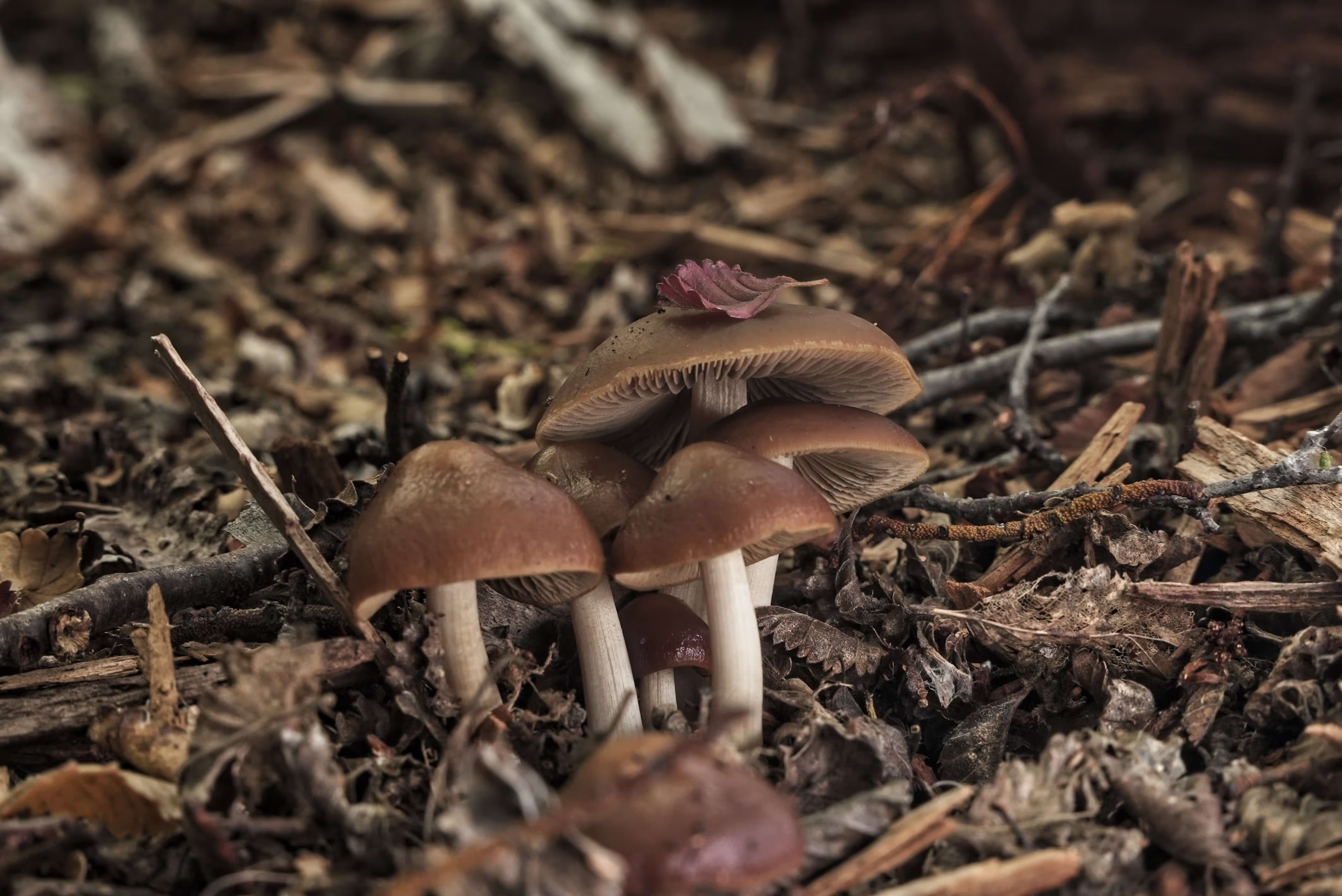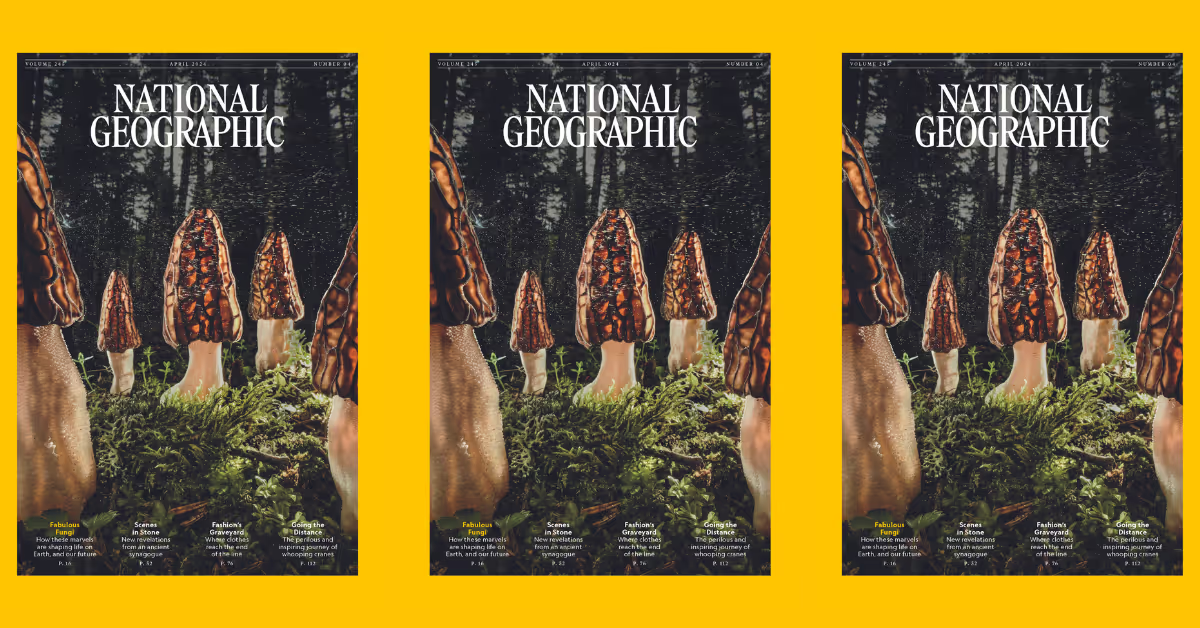Additionally, National Geographic magazine has published a historic cover story on fungi, marking the first time in its 130+ year history that fungi were photographed as the cover story.
March 12, 2024

FFungi Staff
FFungi Volunteer
Fungi comprise one of life’s kingdoms—as broad a category as “animals” or “plants”—and play vital roles sustaining life on our planet. When we disrupt them, we jeopardize the health and resilience of the biosphere. We also destroy the library of remarkable solutions that fungi have evolved, many of which might prove vital to humans in the future. Yet fungi are under-researched and represent a meagre 0.2% of global conservation priorities.
“We applaud National Geographic's leadership in adopting mycologically inclusive language,” commented Giuliana Furci, founder and executive director of the Fungi Foundation and National Geographic Explorer. “The integration of fungi into the narrative of conservation both deepens our understanding of ecosystems and invites us to consider our collective responsibility towards these often-overlooked organisms and the vital processes they oversee. We hope that National Geographic’s pioneering action can serve as a rallying call, encouraging other institutions, organizations, national governments, and individuals to recognize and prioritize the often-overlooked role of fungi in the intricate tapestry of our planet's biodiversity and the many ways they support human life, from vital medicines to food.”
For these reasons, the Fungi Foundation, the world’s leading fungal conservation non-profit founded in 2012, commends the recent historic decision by the global non-profit National Geographic Society to include the kingdom of fungi in its definition of wildlife alongside plants and animals.
“Our wildlife work now covers projects that inspire and empower local and global audiences to better understand and protect wildlife, including animals, plants and fungi,” said Ian Miller, chief science& innovation officer, National Geographic Society. “The same threats that affect plants and animals, such as habitat destruction, climate change and overharvesting, also affect fungi. We hope that by including fungi, current and future Explorers will know the Society supports projects that aim to understand, illuminate, and protect these critical organisms.”
Additionally, National Geographic magazine today published a historic cover story and series of articles about fungi. The April issue marks the first time in its more than 130-year history that National Geographic magazine features fungi as its cover story. The edition includes four distinct “chapters” on fungi: as a danger to hitchhikers; as a potential antidote for devastating plant diseases; as a key to cancer research breakthroughs; and as a solution to the world’s fast fashion problem. Also accessible on online, the features will explore the most fascinating aspects of these often-overlooked organisms – from making up the biome in our bodies to the potential perils of our intertwined futures to the promise fungi represent for humanity.
"The work of The Fungi Foundation has been instrumental in helping people worldwide better understand the importance of fungi, and we couldn't be happier to make this critical form of life the subject of our cover story in the April issue of National Geographic. Our hope is to show readers just how fascinating these organisms are, and how vital a role they play in our ecosystems and in our lives," said Nathan Lump, National Geographic's editor-in-chief.

The National Geographic Society has been leading the way in biodiversity discovery and conservation of nature for more than 130 years. Over that time, scientific advances in the areas of plant and animal sciences have dominated its research landscape and have been explicitly mentioned as areas of interest.
The inclusion of fungi as an official area of interest puts funga on an equal footing as flora and fauna when referring to macroscopic life on Earth. Funga refers to "fungi of a specific region, habitat, or geological period," serving as an equivalent concept to flora and fauna for plants and animals. This historic step will help write this neglected kingdom of life into conservation and agricultural policy frameworks, and unlock crucial funding for mycological research, surveys, and educational programs.
Alongside the editorial and cover story, National Geographic Society’s Impact Story Lab — an award-winning creative unit that combines world-class storytelling with social and behavioral science in order to drive positive change for National Geographic Explorers — has produced a short film titled “Flora, Fauna, Funga,” directed by the Society’s Sam Sheline. Filmed in Tierra del Fuego, Chile, the film captures part of Giuliana’s life-work effort for fungi to be protected alongside animals and plants and accompanies fieldwork conducted by Fungi Foundation alongside close collaborators Merlin Sheldrake, biologist and author of the bestselling book on fungi Entangled Life; Toby Kiers, co-founder of the Society for the Protection of Underground Networks; and musician Cosmo Sheldrake whose music features in the film. The film is available now on National Geographic’s YouTube and will also premiere at the Environmental Film Festival in the Nation’s Capital (DCEFF) on March 26, 2024.
The inclusion of fungi by the National Geographic Society strengthens ongoing efforts by the Fauna Flora Funga Initiative, led by Fungi Foundation, NYU School of Law’s More-Than-Human Rights (MOTH) Project and Merlin Sheldrake. César Rodríguez-Garavito, NYU Law professor and MOTH’s director, commented that “despite their crucial role in sustaining life on Earth, fungi have long been overlooked in national and international political frameworks, with Chile being an outstanding exception. The Initiative aims to fill this gap by advocating for the inclusion of fungi in international environmental and conservation laws, policies, and language.”
